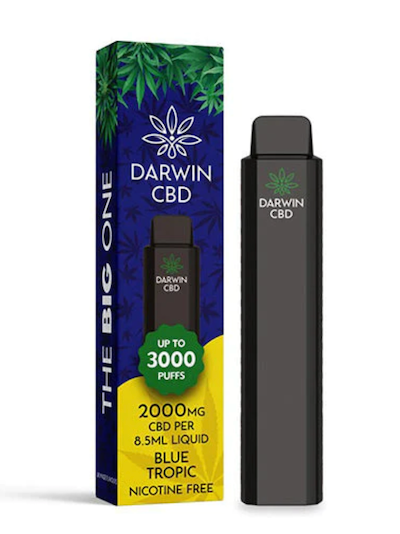
Vaping has become a popular method for consuming nicotine, CBD, THC, and other substances. Two common types of vaping are dry herb vaping and e-liquid vaping, each offering distinct experiences and benefits. Whether you're new to vaping or considering switching between these methods, understanding their differences can help you make informed choices.
What is Dry Herb Vaping?
Dry herb vaping includes usage of dry herb vaporizers. Dry herb vaping involves vaporizing ground plant material directly. This method is commonly used for cannabis and herbal blends. Here’s a breakdown of how dry herb vaping works and its key characteristics:
1. Device and Setup
Dry herb vaping devices, often called vaporizers or herbal vaporizers, are designed specifically to heat dry plant material to a temperature that vaporizes its active compounds without combusting it. These devices can vary in size and complexity, from portable handheld units to desktop models.
2. Material Used
The material used in dry herb vaping is precisely that—dried herbs. This includes cannabis flower, herbal blends, and other botanicals. The herbs are ground into a fine consistency before being loaded into the vaping chamber of the device.
3. Vapor Production and Flavor
Dry herb vaping produces vapor rather than smoke. The vapor is smoother and less harsh than smoke, making it a preferred method for those who want to avoid the negative effects of combustion. The flavor profile of the vapor can vary depending on the strain of herb used and the temperature settings of the device.
4. Control Over Experience
One significant advantage of dry herb vaping is the control it offers over the vaping experience. Users can adjust the temperature settings on their devices to achieve different effects. Lower temperatures preserve the flavor and aroma of the herbs, while higher temperatures may produce thicker vapor and stronger effects.
What is E-liquid Vaping?
E-liquid vaping, also known as vape juice or e-juice vaping, involves vaporizing a liquid solution typically containing nicotine, flavorings, and other additives. Here’s a closer look at how e-liquid vaping works and its distinguishing features:
1. Device and Setup
E-liquid vaping devices, commonly referred to as electronic cigarettes (e-cigarettes) or vape pens, are designed to vaporize e-liquid when heated. These devices can vary widely in size, shape, and functionality, catering to different preferences and vaping styles.
2. E-liquid Composition
E-liquids consist of a base (usually propylene glycol (PG) and vegetable glycerin (VG) in varying ratios), nicotine (optional), flavorings, and sometimes additives like sweeteners or cooling agents. The e-liquid is poured into a refillable tank or cartridge attached to the vaping device.
3. Vapor Production and Flavor
E-liquid vaping produces a flavored vapor that can mimic the taste of various fruits, desserts, menthol, and more. The vapor production can vary depending on the device and settings but is generally denser and more visible than the vapor produced by dry herb vaping.
4. Convenience and Accessibility
One of the primary appeals of e-liquid vaping is its convenience. E-liquids come in a wide range of flavors and nicotine strengths, allowing users to personalize their vaping experience. Refillable tanks and disposable cartridges make it easy to switch flavors or nicotine levels as desired.
Key Differences Between Dry Herb and E-liquid Vaping
Now that we’ve explored each method individually, let’s highlight the key differences between dry herb vaping and e-liquid vaping:
1. Material Used
Dry Herb Vaping: Uses ground dried herbs or cannabis flower.
E-liquid Vaping: Uses a liquid solution containing nicotine, flavorings, and additives.
2. Vapor vs. Smoke
Dry Herb Vaping: Produces vapor without combustion, resulting in a smoother experience.
E-liquid Vaping: Produces flavored vapor, also without combustion, known for its denser cloud production.
3. Control and Customization
Dry Herb Vaping: Offers control over temperature settings and strain choice, affecting flavor and effects.
E-liquid Vaping: Provides customization through a wide variety of flavors, nicotine strengths, and device options.
4. Purpose and Preference
Dry Herb Vaping: Preferred by those who enjoy the natural flavor and effects of herbs, including medicinal cannabis users.
E-liquid Vaping: Appeals to users seeking convenience, flavor variety, and precise nicotine delivery, often as an alternative to smoking.
Conclusion
Both dry herb vaping and e-liquid vaping offer unique advantages and cater to different preferences and purposes. Choosing between them depends on factors such as personal taste, desired effects, and lifestyle preferences. Whether you prioritize flavor, customization, or control over your vaping experience, understanding these differences empowers you to make informed decisions that enhance your vaping journey. As vaping technologies continue to evolve, so too do the options available to consumers, ensuring a diverse and dynamic vaping landscape for years to come.








